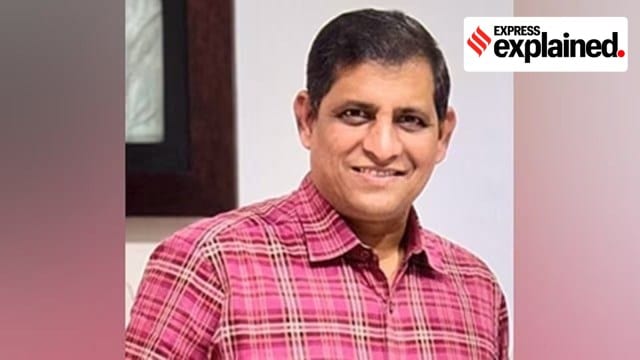With Kerala’s new DGP appointment, why the 1994 Koothuparamba firing is being recalled
IPS officer Ravada Chandrasekhar was posted in Kannur, a CPI(M) stronghold, when protesting activists of the party youth wing DYFI were fired at in 1994.
 Chandrasekhar, who was then SP, was placed under suspension in November 1998, but was later reinstated. (File)
Chandrasekhar, who was then SP, was placed under suspension in November 1998, but was later reinstated. (File)The appointment of 1991-batch IPS officer Ravada Chandrasekhar as the new DGP and the state police chief on Monday (June 30) has brought back the 1994 police firing incident at Koothuparamba, in Kannur, into focus.
Five young CPI(M) men were killed in the firing, and another man, whom the party called a “living martyr”, became bedridden and died last year. In 1998, the CPI(M)-led government registered a murder case against Chandrasekhar, who was one of the police officers in the dock at the time.
What was the Koothuparamba firing incident?
In 1994, when the Congress-led United Democratic Front (UDF) government was in power in Kerala, Marxist rebel leader MV Raghavan, who had formed the Communist Marxist Party (CMP) after being ousted from CPI(M), was the Cooperation Minister.
Raghavan had started a new medical college in Kannur, under the cooperatives sector, the first such medical college in India at the time. However, the CPI(M) youth wing, the Democratic Youth Federation of India (DYFI), had long been on the warpath against the idea of a self-financing medical college. It argued that the model would lead to the commercialisation of higher education in Kerala and make it inaccessible to the public.
On November 25, 1994, when Raghavan reached Koothuparamba to inaugurate a bank branch, DYFI activists black flagged and waylaid him. The melee resulted in police firing on DYFI workers, killing five of them. An injured victim named Pushpan was bedridden for three decades.
What was Chandrasekhar’s role in the Kuthuparamba firing?
The 1991-batch IPS officer was appointed as the assistant superintendent of police for the Thalassery sub-division, which includes Koothuparamba, two days before the firing. He was also present in Koothuparamba on that day.
The Justice Padmanabhan Nair commission, which probed the incident, said of Chandrasekhar, “He had acted in compliance with the orders of the executive magistrate. However, the ASP ought to have exercised discretion vested with him carefully.’’
Acting on the commission report, the CPI(M) government in 1997 directed police to register a murder case against Raghavan, Deputy SP Hakeem Bathery and executive magistrate T T Antony.
The next year, then-DIG Jacob Punnose submitted a report to the court, listing Chandrasekhar as an accused in the case. Subsequently, Chandrasekhar, who was then SP, was placed under suspension in November 1998, but was later reinstated. The officer petitioned the High Court over the FIR against him. It was later quashed, and the decision was also upheld by the Supreme Court when the CPI(M) government challenged the HC order.
Why is the CPI(M) facing heat over Chandrasekhar’s appointment?
Koothuparamba victims are among the CPI(M)’s most celebrated martyrs, and the incident is often projected as a symbol of the fighting spirit of the cadres.
As a result, the CPI(M) appointing an officer who was once blamed for the killing of party workers has become a political issue. The Congress has also criticised the decision.
The CPI(M) state secretary, M V Govindan, said the Union Government (through the UPSC) had suggested three names and the state had to pick one among them. “The appointment is not based on any clean chit given by the party. The court had quashed the case against Chandrasekhar, who was an alleged accused in the case. It was the UDF regime that killed our five comrades. They (the UDF) now need not come as advocates of the martyrs,’’ said Govindan.
Three decades since the firing, the CPI(M) has seen various shifts. A CMP faction founded by MV Raghavan was eventually merged with the CPI(M) in 2019. Further, the CPI(M) has embraced Raghavan’s son, MV Nikesh Kumar, who is now a district committee member of the party in Kannur.
Further, the Koothuparamba agitation was against the commercialisation of professional education in Kerala. In the years since then, the CPI(M) has itself helped establish self-financing colleges. On March 25 this year, the Kerala assembly passed a draft Bill that will now allow entry to private universities in the state. At every such policy shift, Opposition leaders remind the CPI(M) about the Koothuparamba firing.
- 01
- 02
- 03
- 04
- 05





































